Highlight: “Farming in Alaska is like farming on another planet” – Local Farmer working with the Permafrost Grown project.
The Unseen Challenge Beneath Alaska’s Farms
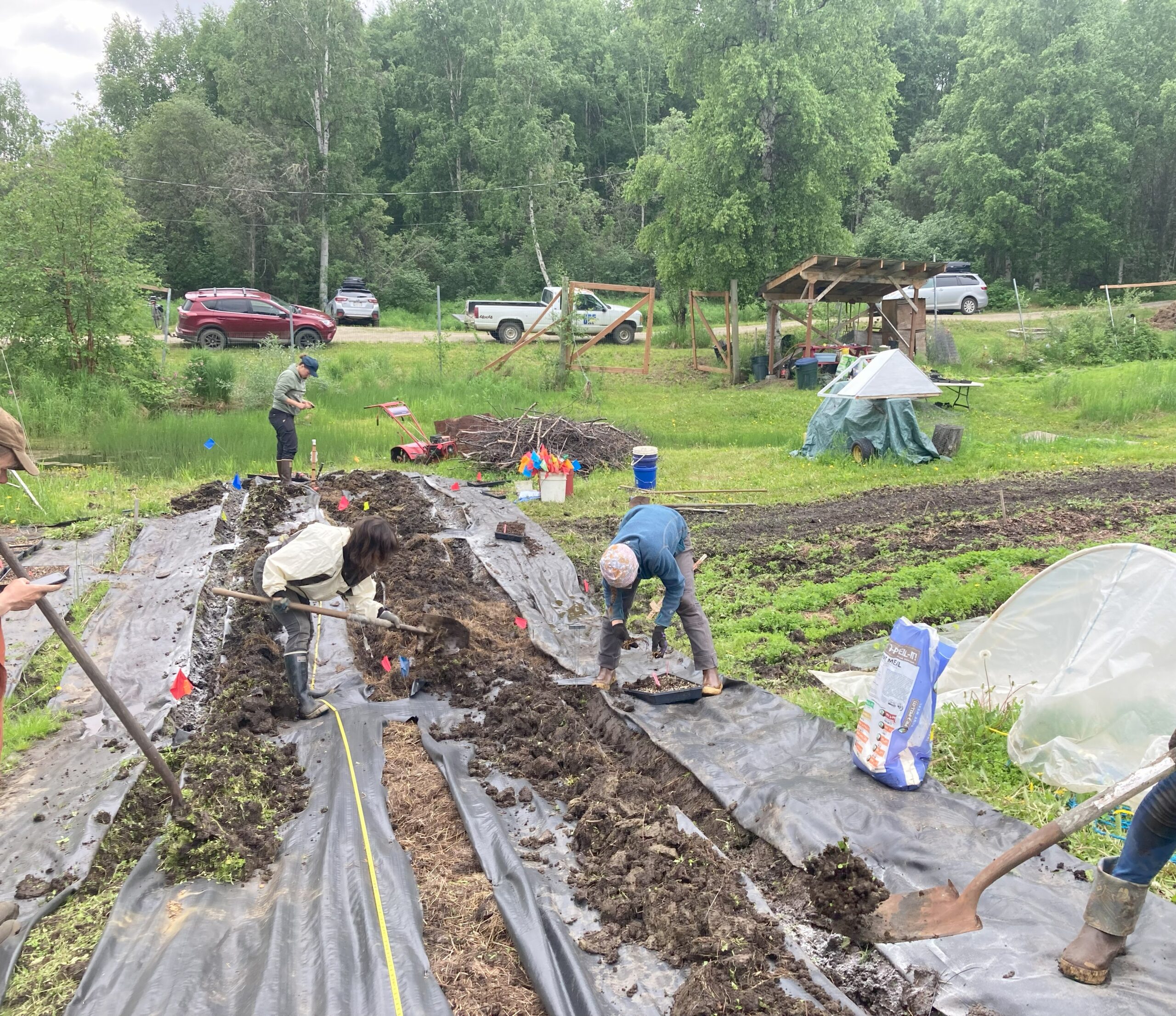
Permafrost Grown team members setting up an asparagus trial at a farm in Fairbanks, AK. The asparagus trial is being set up in an area that includes areas have have always been cultivated and two areas that were abandoned due to subsidence. PC Melissa Ward Jones.
Rising temperatures, extended warm seasons, and a growing number of frost-free days are shifting the geographic range of crop cultivation, contributing to expanded agricultural activity across Alaska. Farming in remote Arctic regions has its difficulties, including a shortened growing season, limited access to resources, and a unique challenge: permafrost. To research the effect of permafrost on agriculture, the Permafrost Grown project (funded by NSF’s Navigating the New Arctic Initiative; www.permafrostgrown.org) brings together researchers from the University of Alaska Fairbanks and Alaskan farmers. The project team aims to understand how the presence and degradation of permafrost impacts agricultural infrastructure and cultivation activities to support sustainable and resilient high-latitude agriculture.
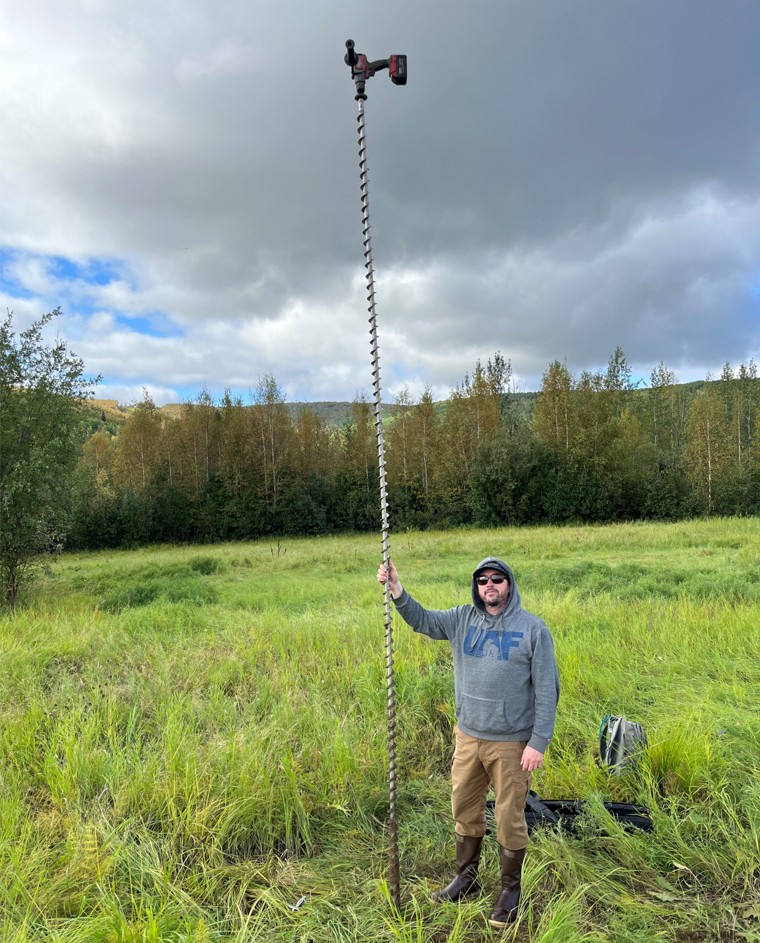
Jones using an electric drill with auger attachment to drill to the top of the permafrost table in an agricultural field in Fairbanks, AK, and in this case drilled to a depth of ~5 m. PC Melissa Ward Jones.
The project lead (PI), Dr. Melissa Ward Jones, explains that the Permafrost Grown team is still determining how permafrost actually affects soils used for agriculture but notes that its presence can lead to conditions that change surface water flow, limit crop growth, or kill crops altogether. In addition to environmental impacts, permafrost damage has significant economic impacts. Ward Jones reports that some local Alaskan farms estimate ~20% of their budget goes to permafrost mitigation projects. An added challenge is that permafrost differs widely in its type, size, and extent. The International Permafrost Association and National Snow and Ice Data Center provide three typical classifications: continuous (underlying 90-100% of the landscape); discontinuous (50-90%); and sporadic (0-50%). Additionally, permafrost thickness can vary from 1-1500 meters and distribution is often patchy and complex in the discontinuous and sporadic zones, making characterization and solutions difficult.
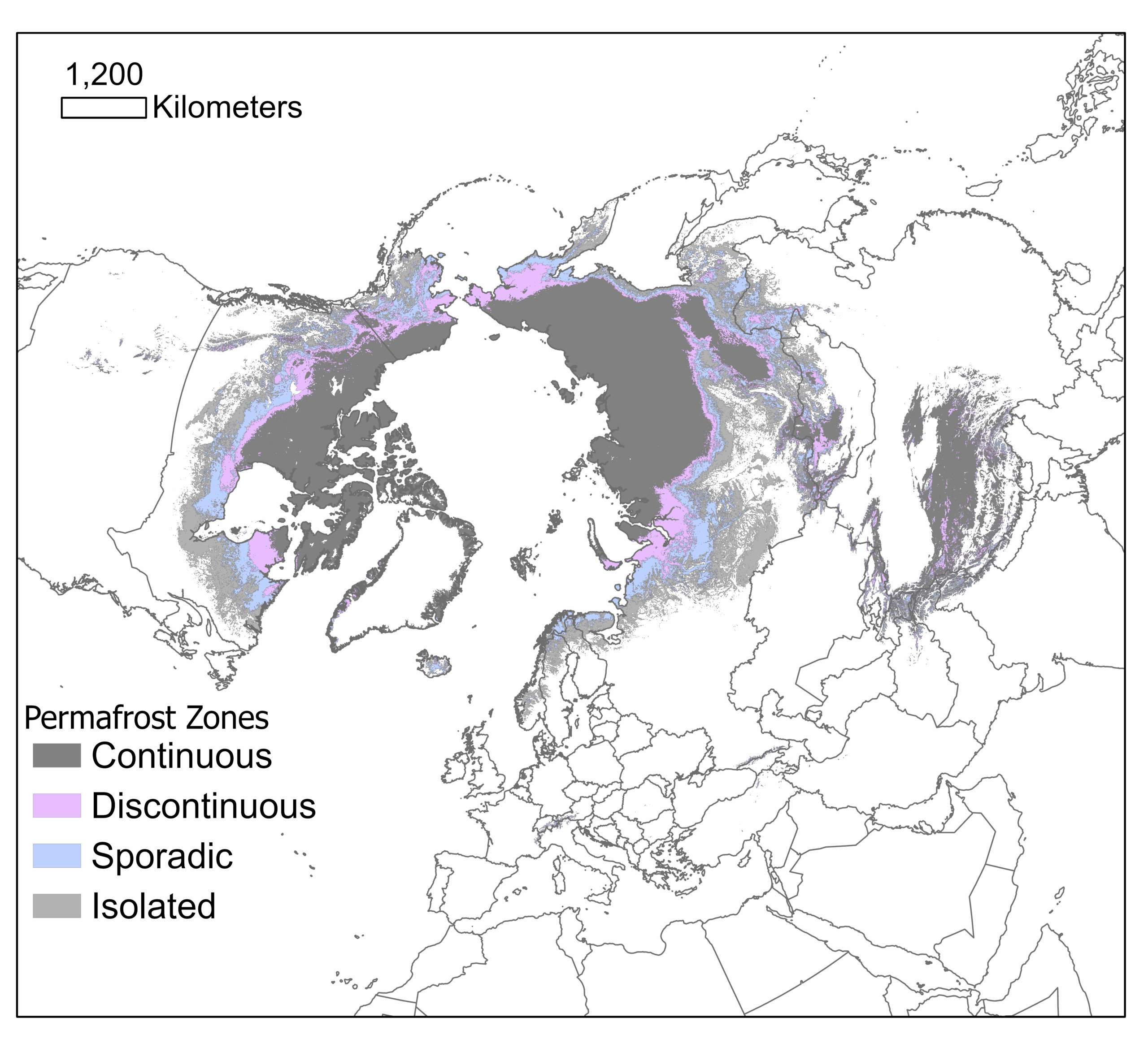
Distribution of Northern Hemisphere permafrost using data from Obu et al., 2019. Figure is modified from Ward Jones et al., 2024.
The Science Behind Permafrost Monitoring
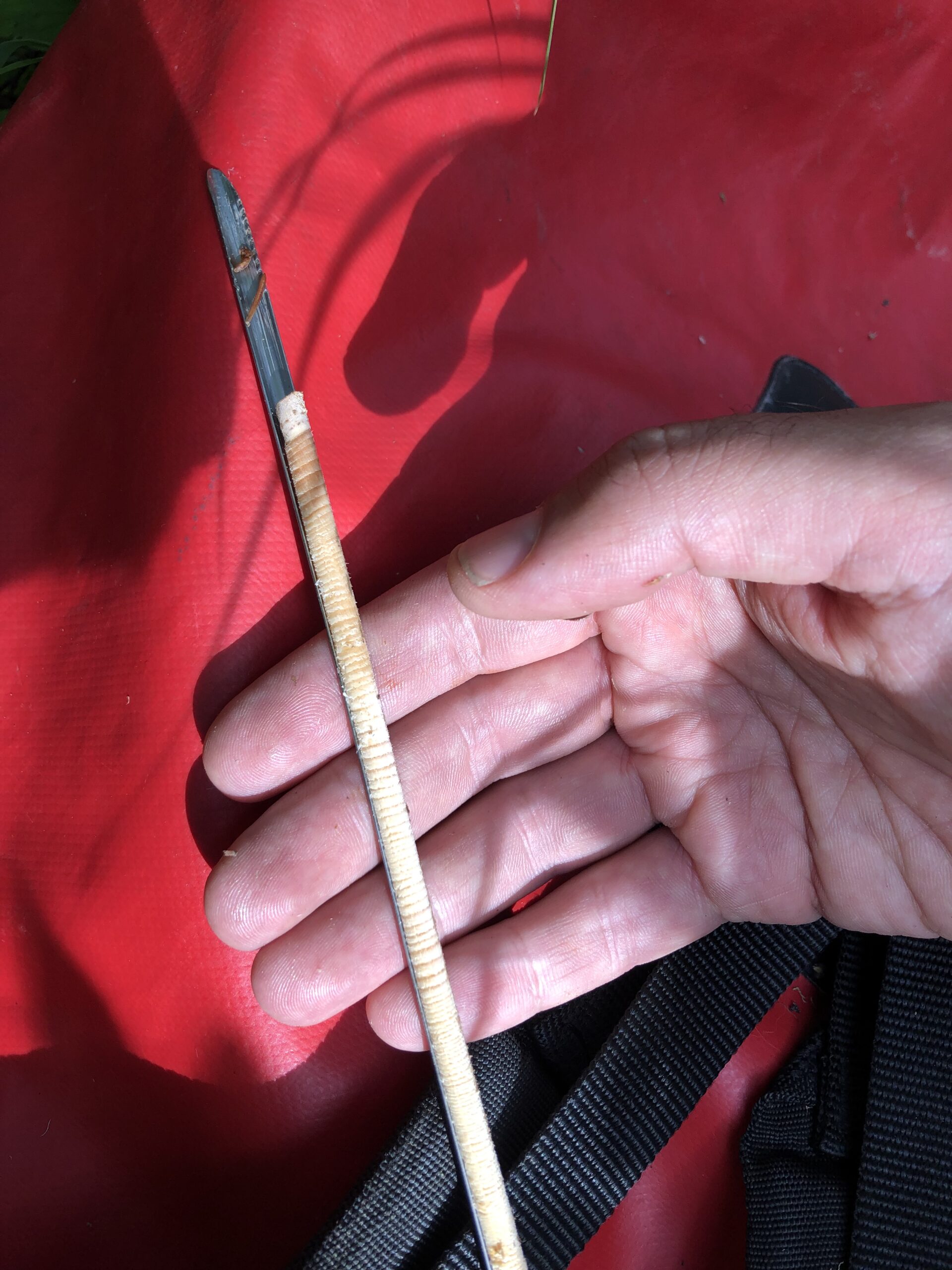
A tree core collected by B. Gaglioti from a leaning tree at a farm site in Fairbanks, AK, shows reactionary wood (darker rings towards the edge) that is produced by trees when they start to lean. This tree began to lean in response to thaw subsidence. This data helps reconstruct permafrost thaw histories at farms. PC Melissa Ward Jones.
The project team’s transdisciplinary approach in permafrost monitoring is novel by bringing together different methods of data collection and analysis. For example, one of these methods, dendro-geomorphology, is spearheaded by University of Alaska Fairbanks Research Assistant Professor Dr. Benjamin Gaglioti. Ward Jones explains that when ice-rich permafrost thaws, the ground subsides, causing trees to lean with it. Gaglioti collects tree cores to study reactionary wood patterns in tree rings (darker and thicker rings near the core boundaries), which allows the team to date the timing of permafrost thaw. Coupling Dr. Gaglioti’s work with other methods, such as drone mapping, ground penetrating radar (GPR) and permafrost drilling led by team members Dr. Benjamin Jones and Dr. Mikhail Kanevskiy, is allowing the project to reconstruct permafrost thaw histories at farm sites.
Other project methods include soil surveys and sampling, satellite and drone remote sensing, sensor networks, agricultural experiments, surveys, interviews, focus groups, workshops, economic and risk modeling, as well as creating education materials and outreach. Learn more at permafrostgrown.org/methods.
How Permafrost Grown Supports Arctic Communities
As Arctic communities are mitigating various landscape changes and hazards such as permafrost thaw, Ward Jones recognizes that more work remains to support the communities at the forefront of these changes. Additional scientific research is essential to fully understand the real impacts and to develop effective solutions for the environmental changes affecting the livelihoods of Alaskans and other Arctic communities.
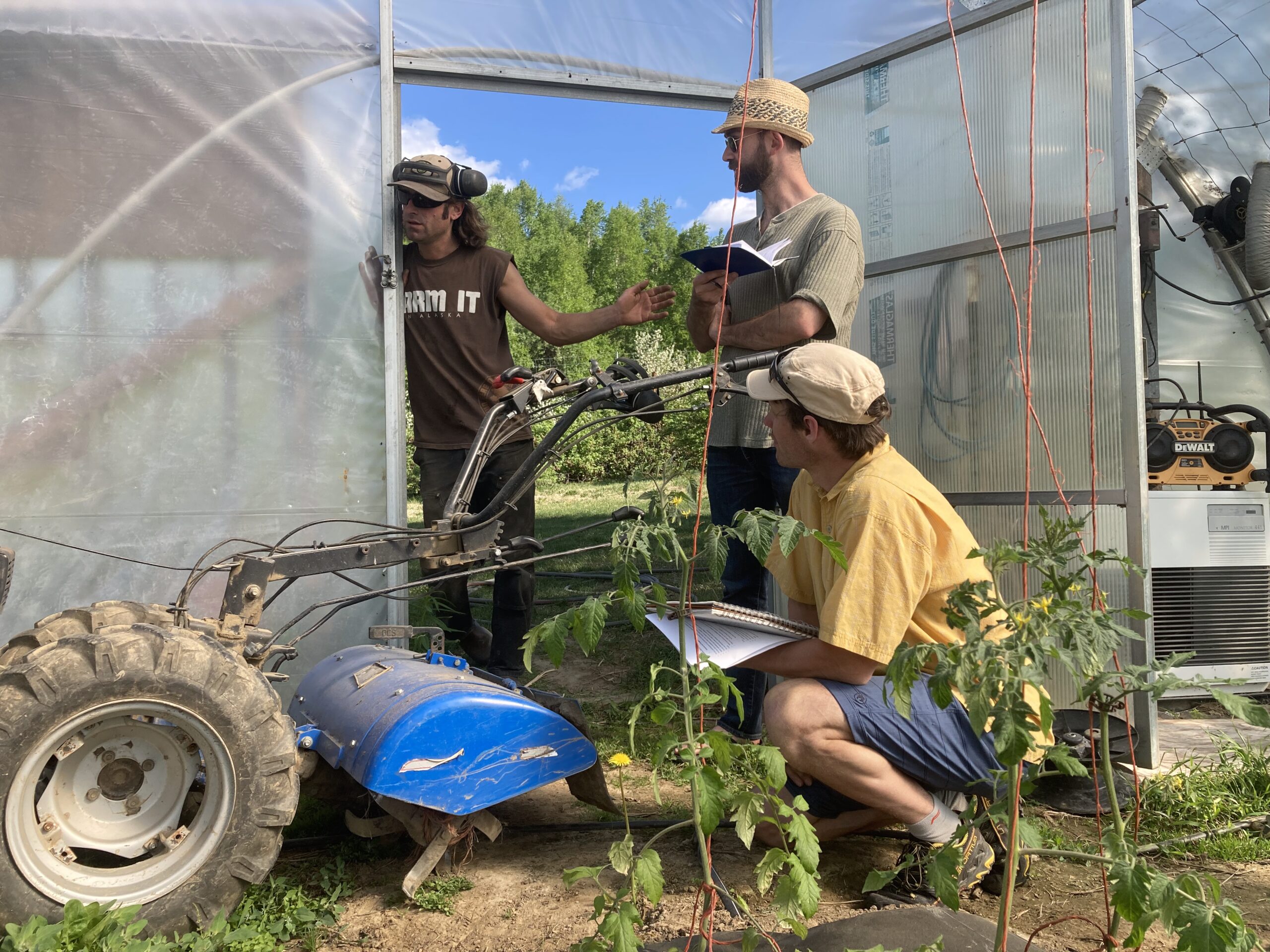
Interview and site visit at a farm in Fairbanks, AK. PC Glenna Gannon.
Since its inception, Permafrost Grown has fostered knowledge co-production and informational exchange between local farmers and scientists to deepen their understanding of permafrost landscapes and to co-develop permafrost-conscious agricultural practices. Still, farming in Alaska brings its own set of unique challenges. As one farmer who previously worked in the contiguous United States put it, “Farming in Alaska is like farming on another planet- everything is different”. This perspective underscores the importance of prioritizing community needs and concerns to achieve shared goals. The blend of scientific expertise and local farmers’ knowledge has formed a symbiotic relationship, each filling in the gap for the other. Through collecting data specific to local environmental conditions, Permafrost Grown is helping better understand these changes and develop solutions in local contexts.
Lessons from the Ground Up
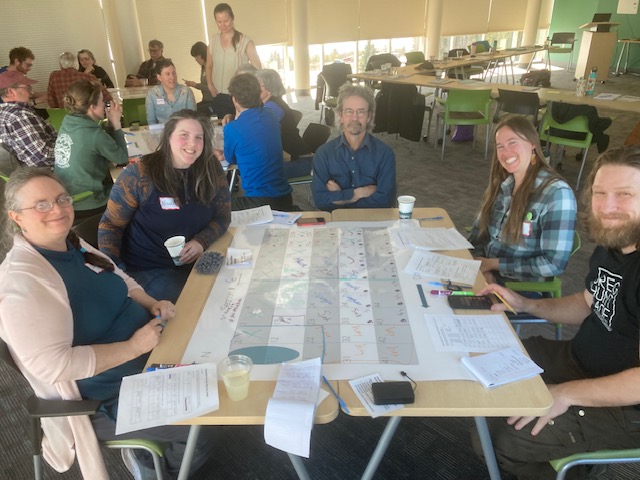
Project farmer-collaborators participate in a Permafrost Degradation Scenario game at an “all hands” project workshop. Collaborators formed groups where they created and cultivated an imaginary farm where they had to respond to varying weather and permafrost thaw over six growing seasons. PC Glenna Gannon.
Many success stories emerge from overcoming unexpected challenges. Permafrost Grown has been built from the ground up, fueled by research and partnerships with local farms, and continues to adapt to unforeseen obstacles as the project evolves. Working with a range of stakeholders such as local farmers, and businesses that were initially farms but converted to other uses; researchers, and more has required greater coordination to address timing, sensor and equipment relocations, travel, and other logistical considerations. Yet, this cross-collaboration has been invaluable, including the co-generation of project research questions Local farmers and community members provide everyday observations about the landscape, and researchers provide the data driven insights, which have helped strengthen the project’s outputs and its ability to better serve local farms and communities. It also highlights the creativity at the intersection of science and community, as both farmers and researchers apply scientific knowledge to adapt to changing landscapes. Researcher-farmer discussions and activities at project workshops (led by project team members Melissa Ward Jones, Glenna Gannon, and Tobias Schwoerer) help put these intersecting topics in context and practice—for example, the project is developing a game where farmers create and farm an imaginary field and respond to weather variability and permafrost thaw. This exercise allows farmers to discuss potential strategies and ideas that can then be applied to their own fields.
How Community Partnerships Are Shaping Arctic Research
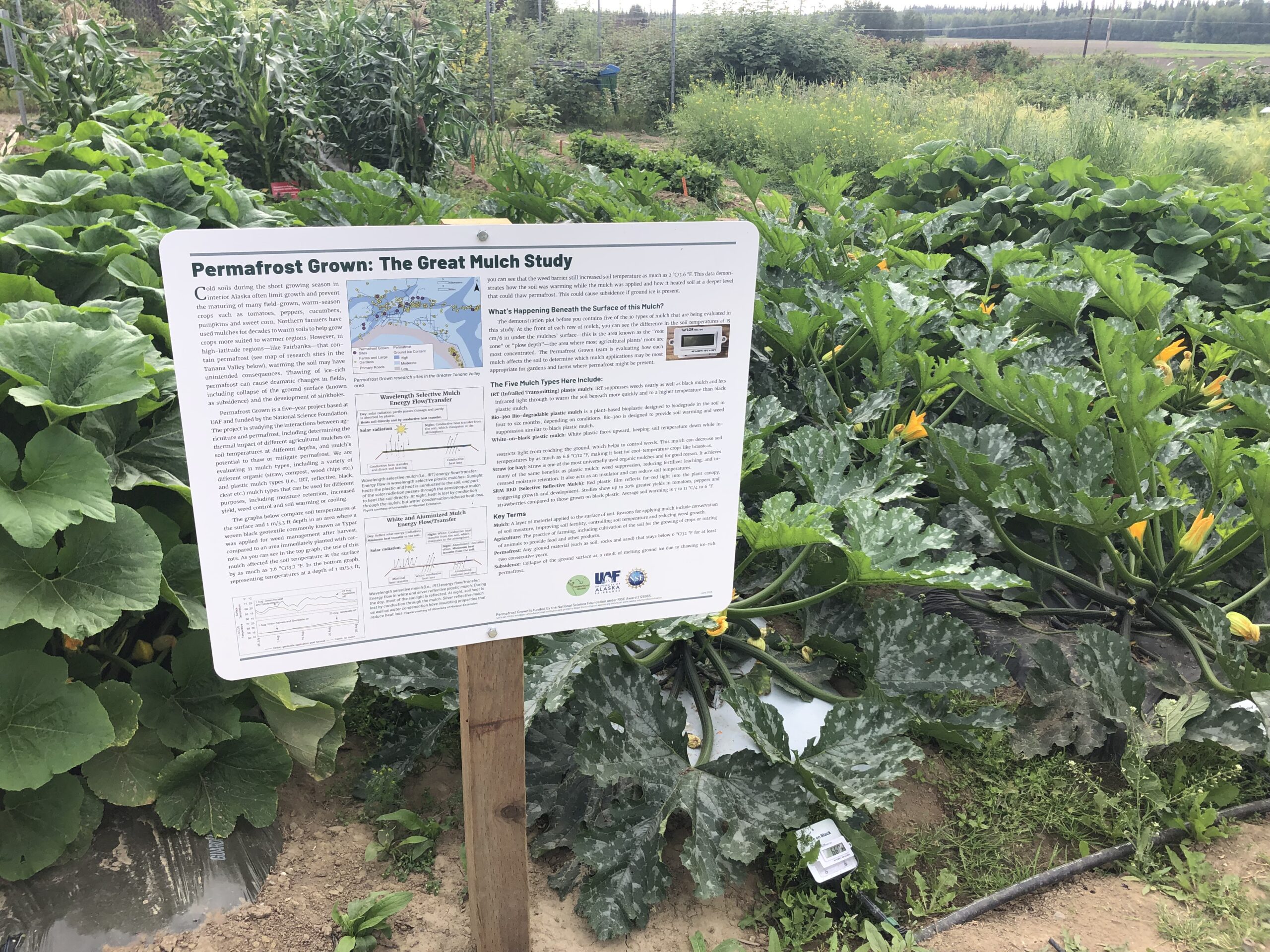
Interpretive sign and accompanying demo plots of the Great Mulch Study created by Glenna Gannon and Melissa Ward Jones at the UAF Georgeson Botanical Gardens in Fairbanks, AK. The Great Mulch Study is measuring the thermal impact of 11 different types of mulch (surface applications such as plastics, compost or straw commonly used for purposes like weed management and artificially heating the soil) to assess their potential to either mitigate or enhance permafrost thaw. Demo plots consist of five different mulches instrumented with ground temperature sensors to show temperature variations in real time. PC Melissa Ward Jones.
Community collaboration is at the heart of Permafrost Grown’s success. This project emerged out of frustrations over the lack of understanding among local Alaskan farmers about what was happening in the environment and lack of resources to offer guidance. The transdisciplinary approach of Permafrost Grown enables the environmental, social, and economic aspects of permafrost-agriculture interactions to be studied. Farmer-researcher collaborations can co-develop solutions and strategies to help mitigate such challenges. Permafrost Grown is creating resources that will be available through the UAF Co-op Extension office. Permafrost thaw will continue to happen, therefore, having a project like such could help drive policies that support more advanced thaw in the future.
Access to tools and resources such as the Arctic Data Center’s data portals have been useful for the project. The Permafrost Grown data portal offers a central location to host and access their data, share findings, and provide context in an easily understandable format to anyone interested in the research.
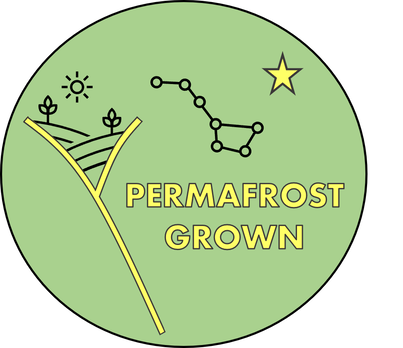
Meet the Scientists and Farmers Behind the Work
Permafrost Grown Researchers
Research for the Permafrost Grown project is conducted by a team of transdisciplinary University of Alaska Fairbanks researchers:
Current Team Members:
- Melissa Ward Jones, Institute of Northern Engineering
- Project lead (PI), permafrost, geomorphology, GIS, project management, field planning, data collection, sensors, communication with farmers, surveys, outreach
- Benjamin Jones, Institute of Northern Engineering
- Co-PI, permafrost, remote sensing, GIS, UAV surveys and post-processing, ground penetrating radar, coring
- Glenna Gannon, Institute of Agriculture, Natural Resources and Extension
- Co-PI, sustainable food systems and agriculture, field planning, communication with farmers, interviews, surveys, agricultural experiments, outreach
- Mihail (Misha) Kanevskiy, Institute of Northern Engineering
- Co-PI, permafrost, ground ice, coring, lab analysis of permafrost cores, permafrost illustrator extraordinaire
- Tobias (Toby) Schwoerer, International Arctic Research Center
- Co-PI, natural resource economics, surveys, interviews, economic modelling
- Benjamin Gaglioti, Institute of Northern Engineering
- Dendro-geomorphology (collecting tree cores from leaning trees and determining timing of thaw), boreal ecosystems, tiltmeters, tree cores
- Yuri Shur, Institute of Northern Engineering
- Permafrost, engineering, ground ice, cores, analysis
- Chien-Lu Ping, Professor Emeritus of Soil Science
- Soil science, pedology, soil sampling, soil archival research
- Daniel (Danny) Stich, M.Sc. Student, Natural Resources and Environment
- , soil science, pedology
- Phillip Wilson, Research Professional, Institute of Northern Engineering
- Fieldwork (drone data collection, post processing and analysis; drilling and tree core collection), GIS data creation, data management and analysis
Former Team Members:
- Nicholas Parlato, International Arctic Research Center
- Ph.D. Candidate, legal geography, Yakutia-Alaska policy comparison, interviews
- Amber Agnew, Institute of Agriculture, Natural Resources and Extension
- Seasonal Technician, drone surveys, post processing, agricultural experiment assistance
- Anna Drew, Institute of Agriculture, Natural Resources and Extension
- Seasonal Technician, agricultural experiment assistance, interview data transcription
Collaborating Farms:
The collaborating farms have been working with UAF researchers since proposal development and were vital in developing research questions for the project:
- Ice Wedge Farm
- Rough Cut Farm
- Porcupine Ridge Farm
Written by Nicole Greco and Angie Garcia
Community Engagement and Outreach Coordinators
